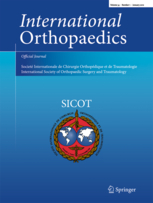
TRAUMA
Twelve-month outcome between novel vs. standard plates for tibial plateau fracture
Int Orthop. 2016 Jul;40(7):1509-1414 patients with comminuted tibial plateau fractures were randomized to open reduction and internal fixation with either novel "anatomical" locking plates or standard locking plates. The purpose of this study was to compare perioperative outcomes, as well as clinical and radiographical outcomes at 3- to 12-month follow-up. The results of this trial demonstrated significant between-group differences in perioperative outcomes, with significantly shorter operative time and lower blood loss noted in the novel anatomical plate group compared to the standard plate group. The trial was unable to detect between-group differences in the time to union, radiographic variables, or clinical outcomes up to 12 months after surgery, however, this trial was limited by the number of patients included. Additionally, it should be noted that one of the authors is listed as the inventor of the novel anatomical plates.
Unlock the full ACE Report
You have access to {0} free articles per month.Click below to unlock and view this {1}
Unlock NowCritical appraisals of the latest, high-impact randomized controlled trials and systematic reviews in orthopaedics
Access to OrthoEvidence podcast content, including collaborations with the Journal of Bone and Joint Surgery, interviews with internationally recognized surgeons, and roundtable discussions on orthopaedic news and topics
Subscription to The Pulse, a twice-weekly evidence-based newsletter designed to help you make better clinical decisions
Exclusive access to original content articles, including in-house systematic reviews, and articles on health research methods and hot orthopaedic topics
Or upgrade today and gain access to all OrthoEvidence content for just $1.99 per week.
Already have an account? Log in


Subscribe to "The Pulse"
Evidence-Based Orthopaedics direct to your inbox.
{0} of {1} free articles
Become an OrthoEvidence Premium Member. Expand your perspective with high-quality evidence.
Upgrade Now












































































